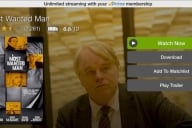You have /5 articles left.
Sign up for a free account or log in.
Much like new parking stickers, greetings from the dean, freshman orientation, long lines at the campus bookstore, and the reception to welcome new faculty and staff, the annual Beloit College "Mindset List" has become one of the back-to-campus rituals of American higher education. The Beloit List was launched in 1998 as a way to help academics understand the coming of age experience of the nation’s college freshmen.
In case you missed it, the new List was released earlier this week. Perhaps like you, dear reader, I too peek at The List each year. I’m curious about the rites of passage for today’s undergraduates and what some might assume to be the cultural and historical black holes they bring to campus. (The IHE article on the 2010 List is titled “What Your Frosh Don’t Know.”) I smile at some items on the annual List, chuckle at others, and occasionally wonder “where did they get that one.”
In a most fundamental way, The List is a reminder that “things change.” In some cases the change can small while in other instances the change can be major and significant. If faculty believe that a liberal arts education is, in essence, about change, then the Beloit List is another one of those informal resources that tracks change in academe – change in our students, change in our culture, and change in the common language about shared history and experiences.
And yet I sometimes wonder if the Beloit List is counterproductive, if it reinforces an inferred if consensual lament that “today’s students know less than their peers” of some years ago (pick a number: 3, 5, 10 or more years ago). I suspect that this lament – “today’s students know less” – is endemic across many parts of academe.
It seems as if college faculty have always complained that “today’s students know less.” (Not you, of course, but perhaps some of your colleagues.) During the mid-1940s, professors and administrators at many college and universities expressed concern that the GI-Bill would bring thousands of unqualified veterans to the hallowed halls of academe.
Professors who taught the (us!) baby-boomers when we were undergraduates three and four decades ago were often appalled by what we did not know upon our arrival on campus.
Some years ago I heard a story about a long-lost petition discovered in a musty basement at Harvard in the mid-1990s. The first class at Harvard consisted of nine students “served by a single master.” The long-lost petition, dated fall 1639, was written by that single master who complained about the terms of his engagement: his teaching load had tripled because the second class at Harvard numbered 18 new students and the Board of Overseers had not hired additional instructors. Despite the increased teaching and supervisory responsibilities, the Overseers failed to increase his stipend. Finally, he expressed concern that these new students knew less Latin, Greek and Hebrew than their peers in the first class. Admittedly, this is not a true story; however, on retelling, it always seems to resonate with the listener and draw a knowing smile.
Which takes us back to the Beloit List. Does The List contribute to the “students know less” lament?
Perhaps I’m naïve; perhaps I’ve gone native. But I wonder about role reversal. I’ll confess that each time I pass magazines in the supermarket I have almost no clue about or context for the first names and accompanying faces I see on so many glossy covers. I don’t know and, honestly, I often don’t care. Yet I do know that these individuals often mean something to many of the young people coming to campus, much as Janis, Jimmy, Jim, and James were icons for several cohorts of college freshmen four decades ago. (In case you have to ask: Janis Joplin, Jimmy Hendrix, Jim Morrison, and James Taylor!)
Could I pass a version of the Mindset List, developed by college freshmen and focused on what they know and have experienced? That list would be laden with individuals, events, and references that are contextually important to undergraduates.
There is a good chance that that I would be clueless about many of the items on the “Reverse Mindset” List. What about you?
Inquiring minds want to know.






